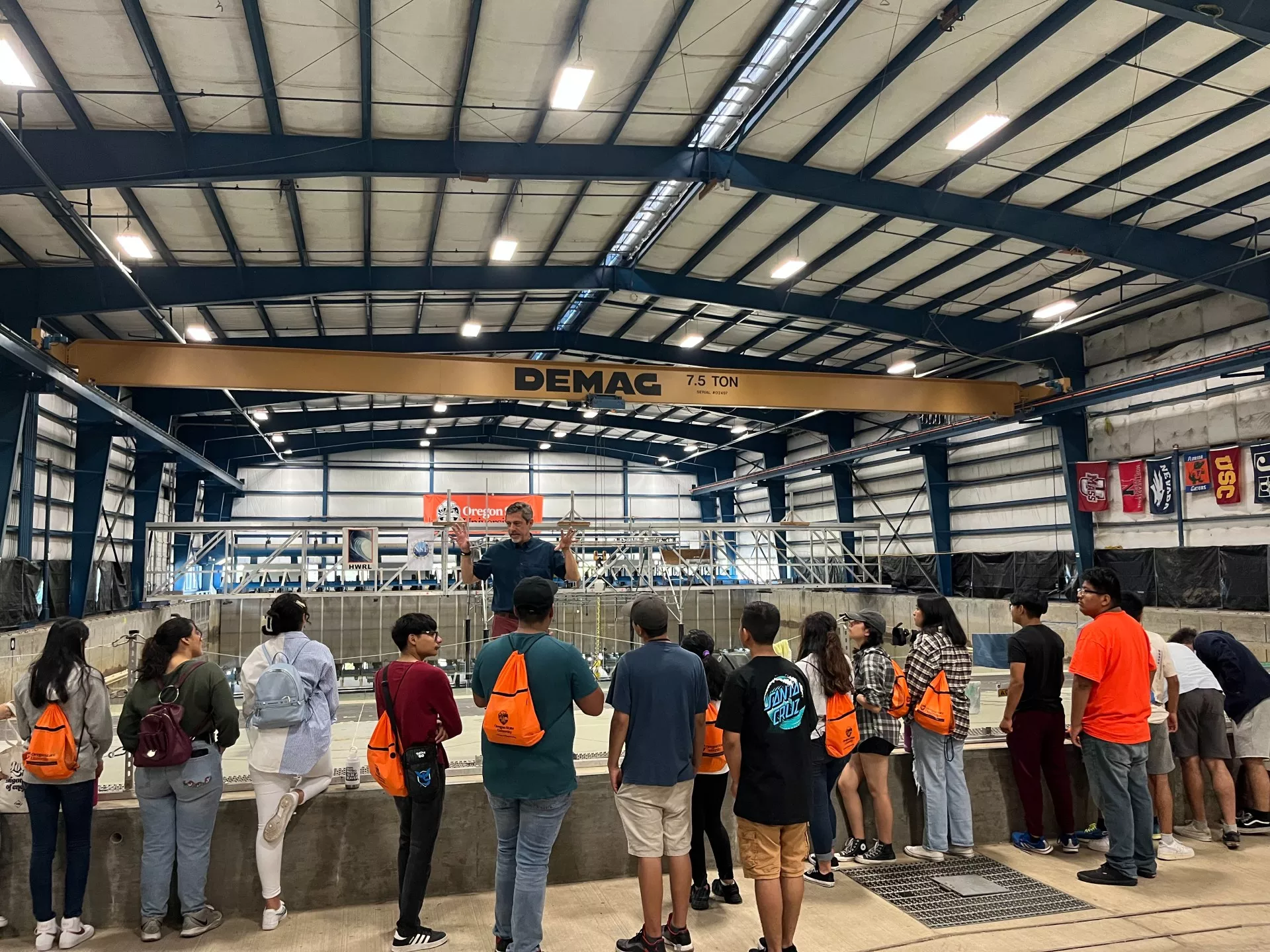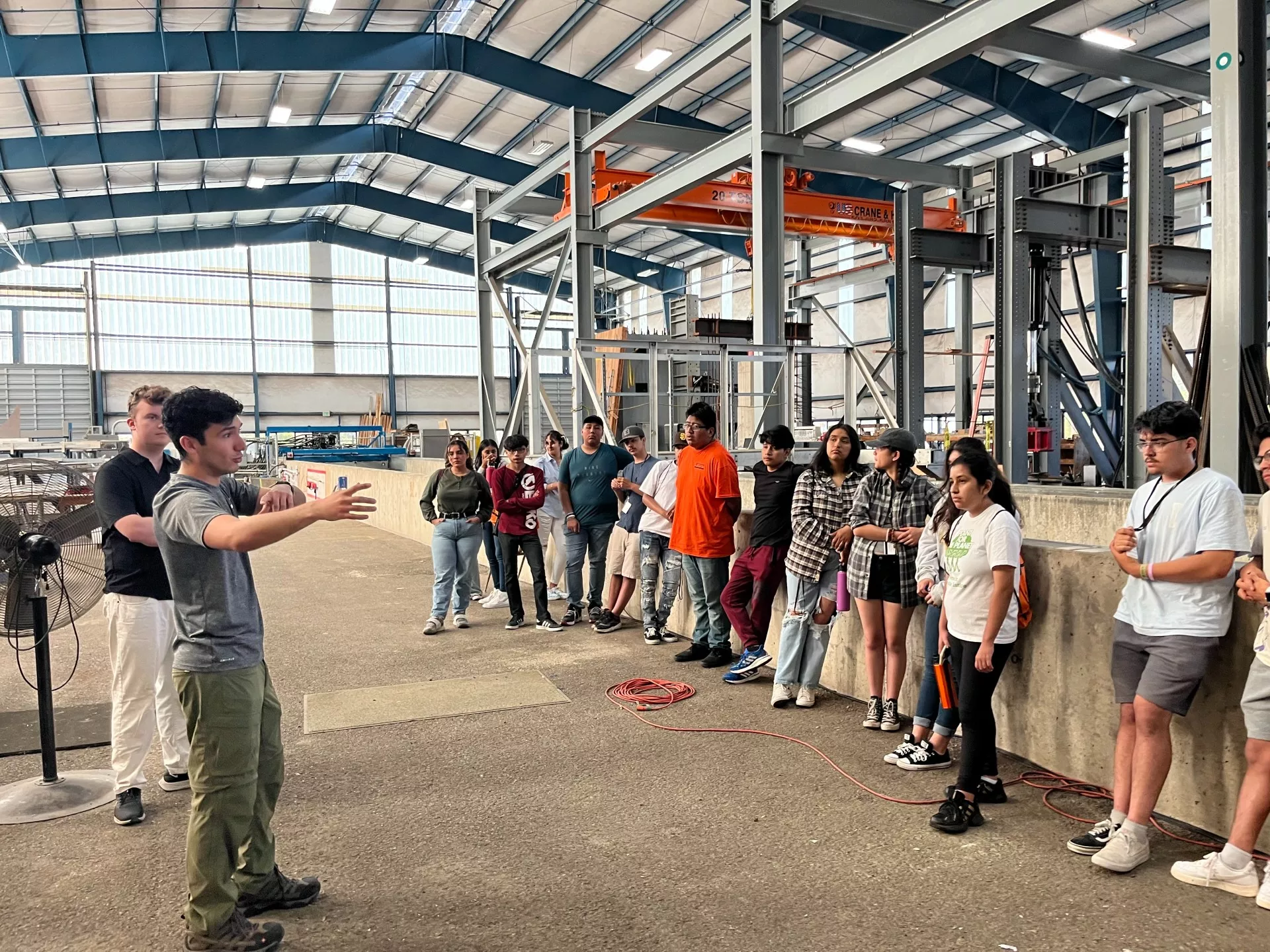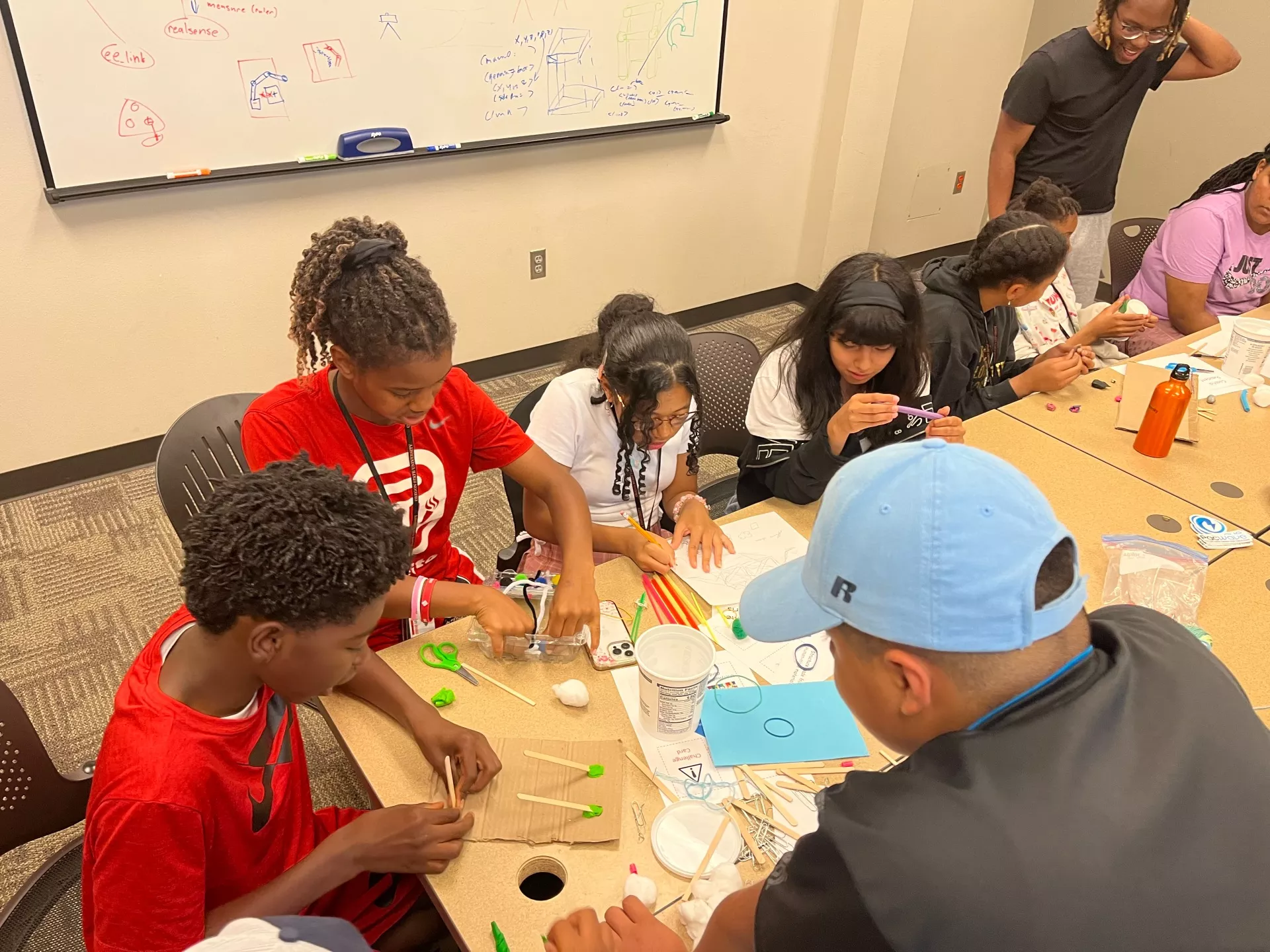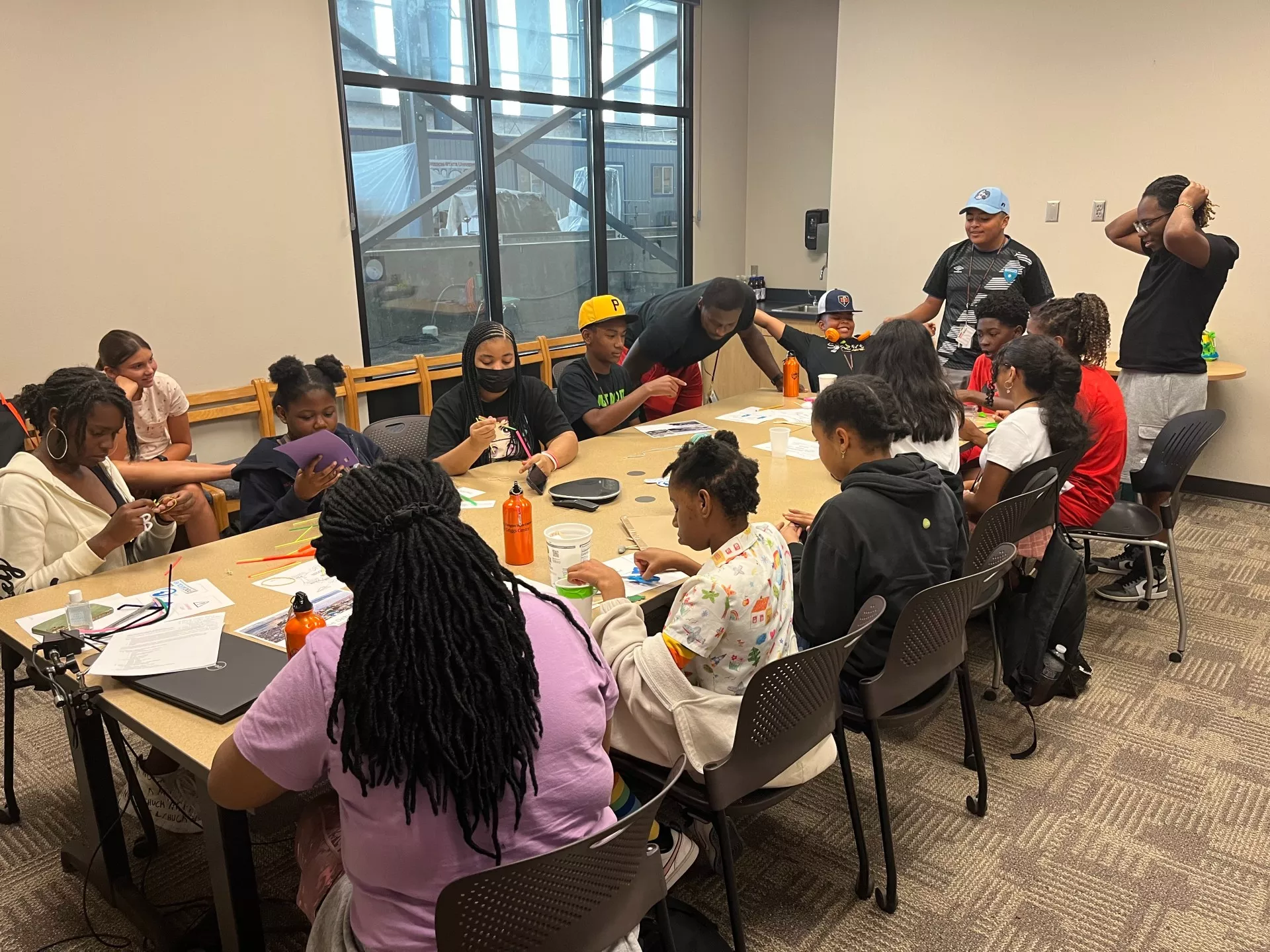








Hinsdale Engages Youth in Engineering Research and Coastal Hazards
In July and August 2022, the O.H. Hinsdale Wave Research Laboratory (HWRL) collaborated with Oregon State University’s (OSU) College of Engineering (COE) to bring middle and high school-aged youth to the facility to participate in hands-on STEM programming. Three, 2-hour summer camp events reached approximately 50 youth and 12 college-aged mentors. Summer camp participants were from three camps coordinated through the COE, including: the first-ever Migrant Engineering Camp associated with OSU’s Migrant Leadership Institute and camps affiliated with Elevate Oregon, and Building Blocks to Success.
Each 2-hour event included a tour of the HWRL facility, connection with engineering professionals, graduate, and undergraduate students conducting research at the facility, and a hands-on activity designed to engage students in the engineering process. Students were able to witness how researchers from the University of Washington’s Applied Physics Laboratory are using infrared cameras and acoustics to analyze bubbles and foam of breaking waves as a way of understanding wave dissipation. They were also able to watch researchers from OSU’s Robotics Decision Making Laboratory trial their robotic arm that could potentially be used to complete underwater tasks such as data and sample collection or trash removal.
Students also participated in a hands-on engineering design challenge that exposed them to coastal hazards facing the Oregon coast, including tsunami, tsunami debris, beach erosion, coastal flooding, and marine debris. To emphasize that engineers work to solve problems to help people, the design challenge included an audience or user. For the challenge, student groups randomly selected their design, coastal hazard, and intended user cards. Then, using household materials, students built mini-models that offered a potential solution to the coastal hazard and presented their model to their peers. For example, one group designed a structure made from human-made materials (design card) to combat coastal flooding (coastal hazard card) to help a coastal resident (user card).
HWRL staff and students were thrilled to have the opportunity to connect with youth participating in COE summer programming and look forward to many future collaborations!
HWRL is an Experimental Facility of the NSF funded Natural Hazards Engineering Research Infrastructure (NHERI) Project (NSF Award 2037914). Any statements in this material are those of the writer(s) and do not necessarily reflect the views of NSF.